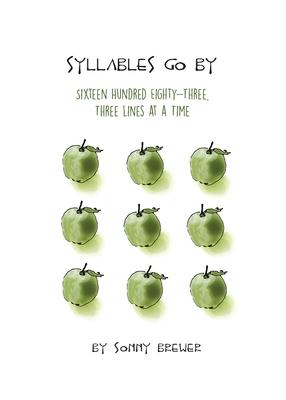Sonny Brewer, author of The Poet of Tolstoy Park and other novels, turns his hand to a unique book of prose and poetry, side-by-side, with a narrative raison d'etre on one page, and a haiku on the facing page. Imagine an artist who paints a canvas, then turns it over, and on the back, writes a description of the time and place and circumstances that inspired the painting. That's what the author has done with each of ninety-nine numbered haiku in this inspirational book. He tells the reader just what was going on, what he was thinking about, what he saw or heard that caused him to express the moment in a haiku of three lines and seventeen syllables. Asks the author, "What if the donkey Christ rode into Jerusalem was aware that his rider was going to meet his fate, and was saddened in the manner of a pet that loses its human friend?" Find the answer in haiku number two.

Syllables Go By: Sixteen Hundred Eighty-Three, Three Lines at a Time
Sonny Brewer, author of The Poet of Tolstoy Park and other novels, turns his hand to a unique book of prose and poetry, side-by-side, with a narrative raison d'etre on one page, and a haiku on the facing page. Imagine an artist who paints a canvas, then turns it over, and on the back, writes a description of the time and place and circumstances that inspired the painting. That's what the author has done with each of ninety-nine numbered haiku in this inspirational book. He tells the reader just what was going on, what he was thinking about, what he saw or heard that caused him to express the moment in a haiku of three lines and seventeen syllables. Asks the author, "What if the donkey Christ rode into Jerusalem was aware that his rider was going to meet his fate, and was saddened in the manner of a pet that loses its human friend?" Find the answer in haiku number two.